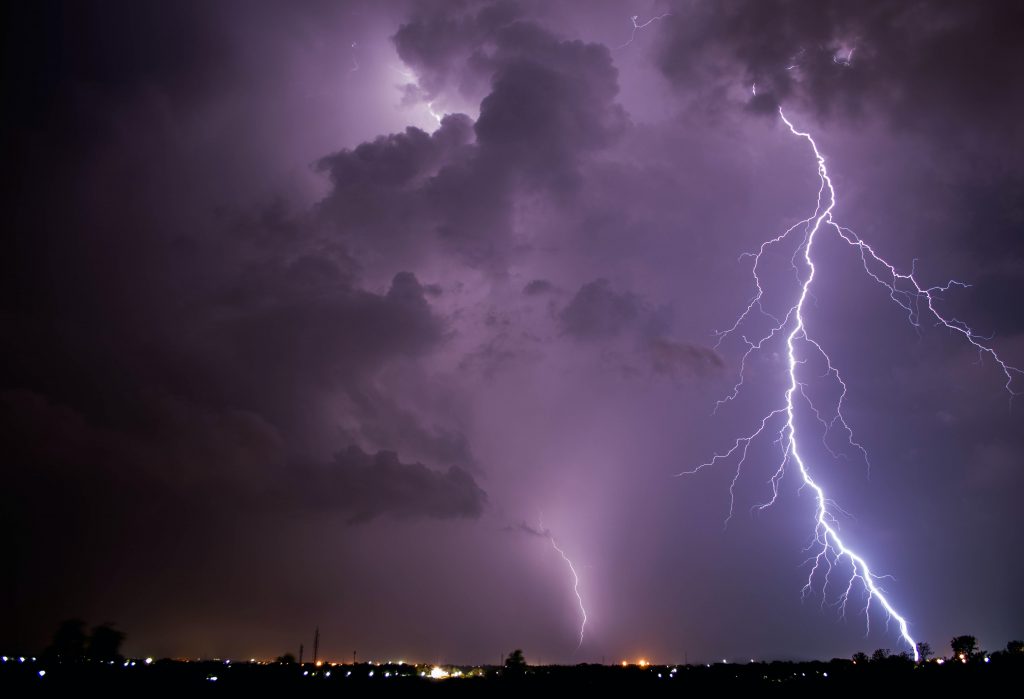
Skylights are available in a variety of designs, including unit skylights, roof windows and tubular daylighting devices (TDDs). The most common uses of skylights include daylighting, which provides building occupants with a source of natural light. They can also serve as a means of passive solar heating, which can reduce utility costs during winter. Some skylights open to provide ventilation for the purpose of air exchange and passive cooling.
The Occupational Safety and Health Administration (OSHA) regulates skylights with respect to safety, especially their resistance to a falling object. However, the federal government leaves the requirements for a skylight’s resistance to high winds and flying debris up to local jurisdictions since this risk is highly dependent on location. Vtech manufactures skylights that are specifically protected against a variety of damage types, including hurricanes.
Overview
In the continental United States, the greatest risk of hurricanes is generally along the southeastern coast. This region averages about two hurricanes per year, with the record being seven. Florida’s shape and location makes it much more vulnerable to hurricanes than any other state and has had five hurricanes since 2016, including Hurricane Michael in 2018. This Category 5 hurricane had peak winds of 160 mph when it struck land, which can rip trees from the ground.
The greatest risk of hurricanes to skylights is usually the impact of solid objects, rather than the wind itself. The combination of high winds and large amounts of rain also presents a risk of leaking and subsequent water damage. Standard skylights can therefore provide a vulnerable entry point to a building during a hurricane.
Regulations
Jurisdictions in areas prone to hurricanes recognize their greater risk with stricter building codes. These regulations vary greatly by location, but Miami-Dade County (MDC) has some of the highest requirements for wind resistance in the country. MDC specifies the standards for hurricane impact-resistant doors and windows in Testing Application Standard (TAS) 201, 202 and 203. ASTM E1886 and E1996 also describe these requirements.
These standards include many specific tests, but the most well-known one simulates a piece of lumber striking a device such as a skylight during a hurricane. This test involves hitting the device with a nine-pound 2×4 at 50 feet per second (fps). This impact is then followed by about 9,000 pressure cycles, depending on the unit’s design.
Manufacture
Vtech makes the glazing for its skylights with a manufacturing process known as Reaction Injection Molding (RIM), which is used to make highly durable composite materials. This process is also routinely used in the automotive industry for a variety of products, including sunroofs and tires.
A shaped piece of glass is prepared and placed in a steel mold. Various chemicals are mixed and heated to produce a liquid polymer, which is then injected into the mold. The liquid flows around the glass and bonds to it without leaving any voids. The polymer cools, resulting in a solid-state skylight that’s slightly flexible and highly durable, able to meet and surpass all required codes for extreme weather conditions. It also includes fall protection as part of the solid-state one-piece skylights.
Installation
In addition to the skylight itself, the quality of the installation is also critical to determining its resistance to hurricanes. Mounting a skylight to a wood curb is a common installation, which generally must be designed by an engineer licensed in that jurisdiction. The frame of the skylight should be attached to the curb with No. 10 screws at a minimum. The installation should also use fasteners along the perimeter of the skylight that penetrate at least one inch into the curb.
Testing
Vtech performs tests on its skylights that are specifically designed to simulate the impacts that can occur during a hurricane. One such test involved an air-tight installation of a skylight over a pressure chamber. It was then shot with an eight-foot 2×4 twice, at speeds exceeding 50 fps. One shot struck the skylight in the center and the other hit in the corner. The glass cracked, but the 2×4 failed to penetrate it.
We pressurized the chamber to +55 pounds per square foot (psf) and then reversed the pressure to -55 psf. We repeated this cycle 4,500 times, but the laminate seal held and didn’t leak.
Summary
These tests show that our top priority at Vtech is the safety of building occupants. Contact us today for more information on how our skylights perform during hurricanes.